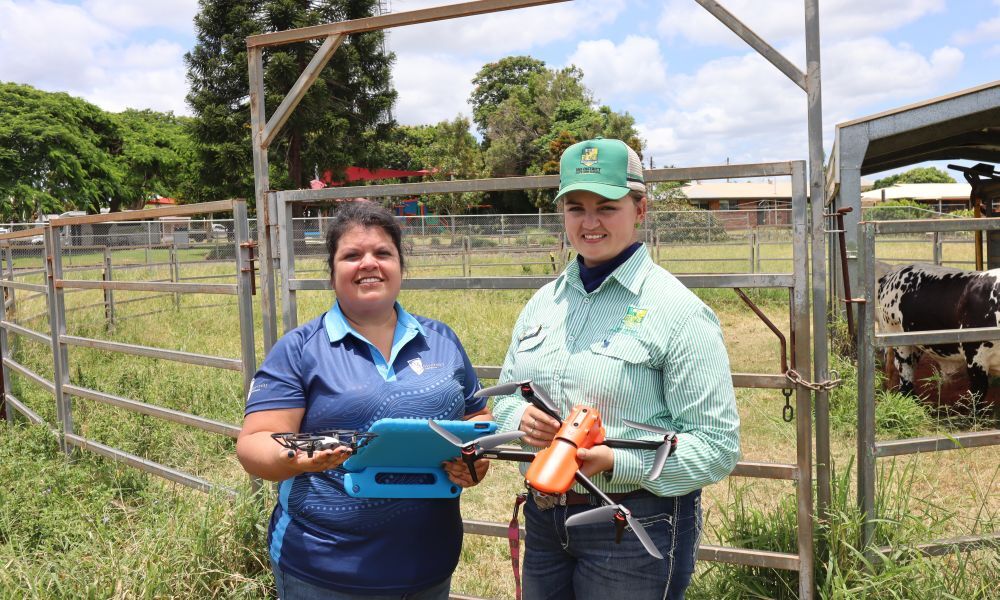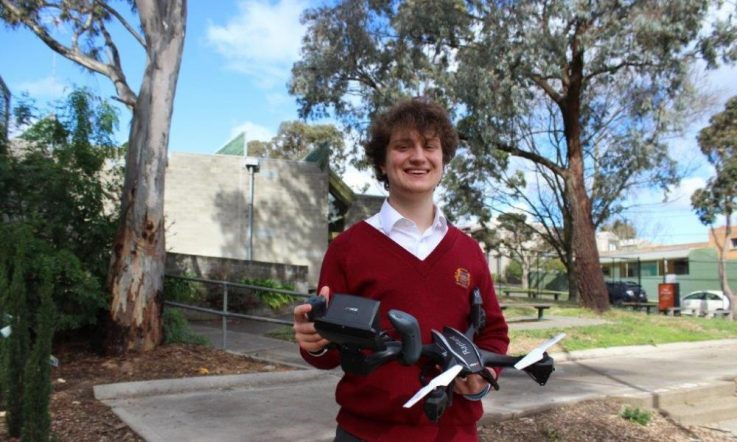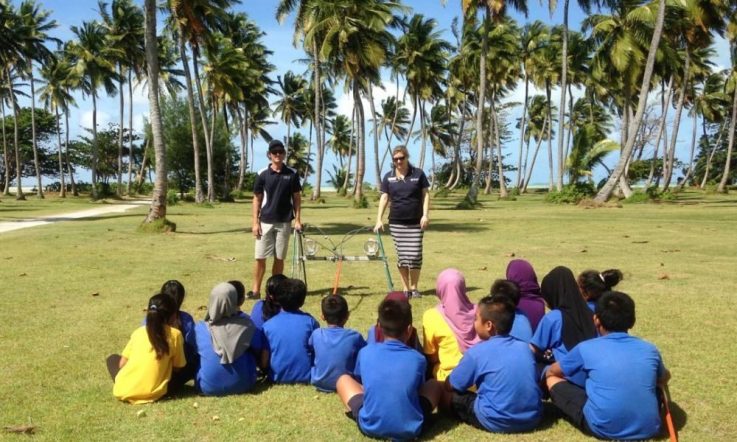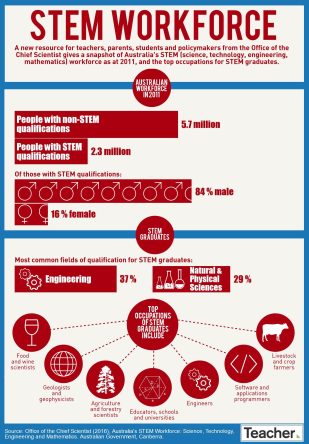In our latest reader submission, Hannah Wiemers (early career teacher and Subject Area Coordinator for the Agriculture program at Isis District State High School) and Dr Michelle Avila Vanderburg (literacy researcher and educator at CQUniversity) share details of a pilot program to create a 10-week curriculum unit allowing students to explore the use of drones in agriculture and gain more insight into careers in the industry.
With the rise of technology in industry, teachers need to find more ways to help their students develop the skills required to be successful in their future careers.
Isis District State High School has partnered with CQUniversity in the Bundaberg region to develop an AgTech drone project to increase the skills and awareness of using technology in Agriculture.
Agriculture – the technological invasion
If recent times have taught us anything, it is that the agricultural industry is undergoing significant changes, technologically modernising many practices that have long been carried out manually by farmers. Examples include automation of tasks such as tractor and harvesting, seeding and weeding, and the use of drones. Australian farmers have been at the forefront of adopting these advancements to improve farming practices.
In 2020, a report commissioned by the Australian Council of Learned Academics emphasised the need to support farmers in familiarising themselves with emerging technologies and acquiring specialised skills (Lockie et al., 2020), forecasting that higher education, TAFE and VET providers will become integral in workforce development.
In Queensland schools, Agricultural Education ‘offers a context for delivering elements of the Australian Curriculum while catering for the diverse needs and interests of students’ (Queensland Curriculum & Assessment Authority, n.d.). While the opportunities are present for educators to provide a broad, diverse, and individualised program suited to their individual school’s needs and agricultural sectors, it is increasingly important for schools to equip students with a basic understanding of agricultural technologies they may encounter in the workforce.
Improving student skills – an AgTech drone project
In 2022, Isis District SHS and CQUniversity received grant funding to introduce a program addressing the need for agricultural technology skills among school leavers. The grant award came from an Engaging Science Grant (funded by the Office of the Queensland Chief Scientist), aimed at inspiring students to study STEM subjects and pursue STEM careers.
Led by Dr Michelle Vanderburg, this funding was used to purchase drones and related equipment for classroom use. The inquiry was simple – could technologies being used in the agricultural industry (drones) be implemented on a micro scale to improve students’ digital literacy and skills, while simultaneously increase engagement and interest in agricultural careers?
Setting up a pilot program
As an early career teacher passionate about Agricultural education, Hannah recognised the need for a team of industry professionals to support the implementation of a technology-based program in the school. With the support and assistance of Michelle, she consulted with education provider She Maps (specifically Sarah Atkins, the education lead), to ensure the program would be aligned to the national Australian curriculum – this ensured it could be implemented and assessed within the classroom for reporting purposes.
It was determined early on that our approach to the program would need to find the connection between the technology and its relevance to industry, or more concisely put: How are drones being used in the agricultural industry?
Our research revealed that high-tech drones are currently utilised for tasks like crop mapping, targeted treatment application, crop planting, and livestock management (such as herding and monitoring), and that one of Australia’s largest application drone providers is based in Bundaberg (Australian Government, n.d.). Based on these findings, the program focused on drone applications in horticulture, specifically crop monitoring.
Designing a curriculum unit
A 10-week unit – Agricultural Drone Technologies – was designed for year 10 Agriculture students to explore the use of drones in agriculture. The unit aligned with the Australian Curriculum: Science and Design & Digital Technologies (Australian Curriculum Assessment and Reporting Authority, 2010a & 2010b). It began with lessons on drone safety, regulations, and the requirements for becoming a drone pilot. Students researched various types of drones and their applications in different industries, particularly agriculture.
A highlight of the unit was a visit to CQUniversity Bundaberg, where students met industry leaders and researchers in farming. They learned about practical uses of technology, including drones, and were informed about career opportunities in agriculture and university pathways.
After learning about drone use in the agricultural industry, students developed practical skills by learning how to fly Tello drones and were asked to perform various tasks such as manoeuvring their drone through an obstacle course. By completing drone flying activities, students began to understand how farmers utilise drones for surveying structures, crops, and animals.
As part of the unit's final assessment, students worked in teams to address an agricultural issue using their drones. Groups were tasked with designing designed flight plans to capture photographic data for crop monitoring in a paddock or field.
What did we find from the pilot program?
As the Agriculture curriculum is not specific, we struggled with finding the appropriate curriculum to link the unit and activities to. However, considering the rural farming area where Isis District SHS is located, it was crucial to develop the unit to inspire students to pursue careers in agriculture, particularly locally. Inviting speakers from the farming and academic industry provided students with valuable insights into their career and education options.
We noticed that when flying their drones, the students displayed increased engagement in the learning process. They worked collaboratively in groups, designing and refining flight plans, and actively engaging in the scientific process by testing, identifying issues, revising, and retesting.
One main highlight is that this is a program that can continue year after year. The curriculum unit can be implemented in future years at Isis District SHS, as well as shared with other schools, and the funds from the Engaging Science Grant provided equipment that can be utilised for years to come.
Where to from here?
Hannah and the Agricultural department at Isis District SHS are dedicated to incorporating agricultural technologies into the curriculum to expose students to industry-relevant technologies, prepare them for the future, and inspire them to pursue careers in agriculture. As the Subject Area Coordinator, Hannah aims to provide students with a comprehensive understanding of the diverse career opportunities in the industry – working in Ag doesn’t always mean getting your hands dirty on the farm. It is also important for Michelle to continue to work with teachers like Hannah to design practical, engaging, and hands-on STEM units for students while informing them about future career and education prospects.
The program will continue this year and be part of further higher education research. Students who completed the program last year will have the opportunity to expand their capabilities and understanding by incorporating livestock management. They will transition from Tello drones indoors to the larger EVO II, which can be flown outdoors over the school's agricultural plot.
Ultimately, teachers face the challenge of balancing student engagement, workforce preparation, content coverage, and traditional teaching approaches. The initial phase of the program indicated the introduction of technology into the Agricultural classroom increased student engagement and improved digital literacy. However, the impact of technology integration to assist in even just one student to select the AgTech opportunities in industry remains to be seen.
References
Australian Curriculum, Assessment and Reporting Authority. (2010a). Science (Version 8.4). Retrieved August 1, from https://www.australiancurriculum.edu.au/f-10-curriculum/science/
Australian Curriculum, Assessment and Reporting Authority. (2010b). Technologies (Version 8.4). Retrieved August 1, from https://www.australiancurriculum.edu.au/f-10-curriculum/technologies/
Australian Government. (n.d.). Agriculture, forestry and fishing. Drones.gov.au https://www.drones.gov.au/drones-australia/benefits-drones-australia/agriculture-forestry-and-fishing
Lockie, S., Fairley-Grenot, K., Ankeny, R., Botterill, L., Howlett, B., McBratney, A., Probyn, E., Sorrell, T., Sukkarieh, S., & Woodhead, I. (2020). The future of agricultural technologies. Report for the Australian Council of Learned Academies. https://acola.org/hs6-future-agricultural-technologies/
Queensland Curriculum and Assessment Authority. (n.d.) Agricultural Education and the Australian Curriculum. Queensland Government. Retrieved August 1, from https://www.qcaa.qld.edu.au/downloads/aciq/science/aciq_ag_education_ac.pdf (140KB)
What are the major employers and local industries in your area? How could you work with community organisations and industry experts to give them a basic understanding of these possible careers are develop skills needed for the workforce?



